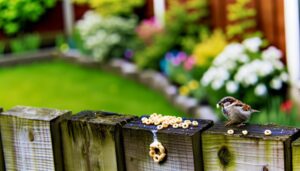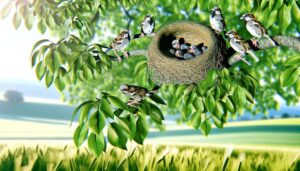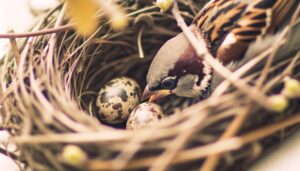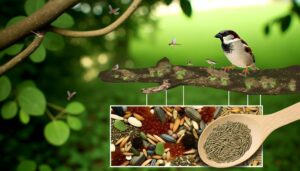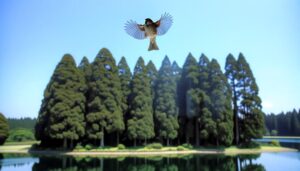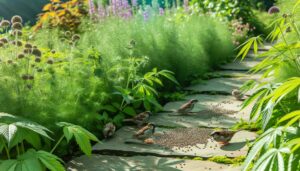7 Simple Steps to Make a Sparrow Water Feeder
To construct a sparrow water feeder, begin with a non-toxic plastic or ceramic container and a stable base. After thoroughly washing and sterilizing the container, attach it to a stand using stainless steel screws and waterproof adhesive.
Incorporate a fine mesh screen to maintain water clarity and deter debris. Fill the feeder with clean, dechlorinated water, guaranteeing a shallow depth, and place it in a shaded, predator-free area near natural cover.
Regular upkeep involves cleaning every 2-3 days and daily water refills to ensure bird health and safety. Next, explore detailed steps and additional tips for best outcomes.
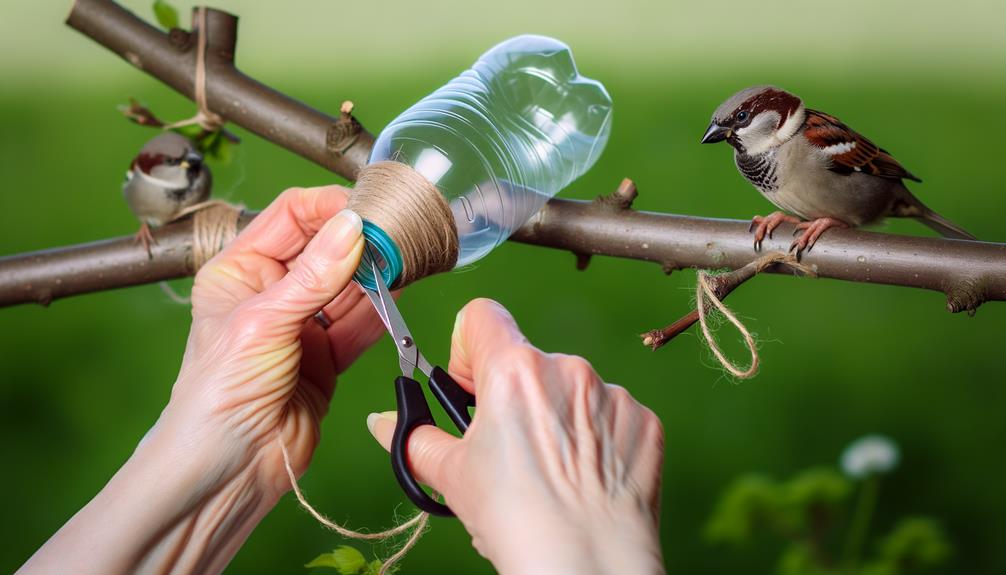
Key Takeaways
- Clean and sterilize a sturdy plastic or ceramic container to ensure a hygienic environment for sparrows.
- Attach a shallow dish to an elevated stand using waterproof adhesive or stainless steel screws for stability.
- Add a fine mesh screen to the water container to prevent debris and insects from contaminating the water.
- Fill the feeder with clean, fresh water and place it in a shaded, predator-safe area near natural cover.
- Regularly clean the feeder every 2-3 days with a vinegar solution and refill with clean water daily.
Materials You Will Need
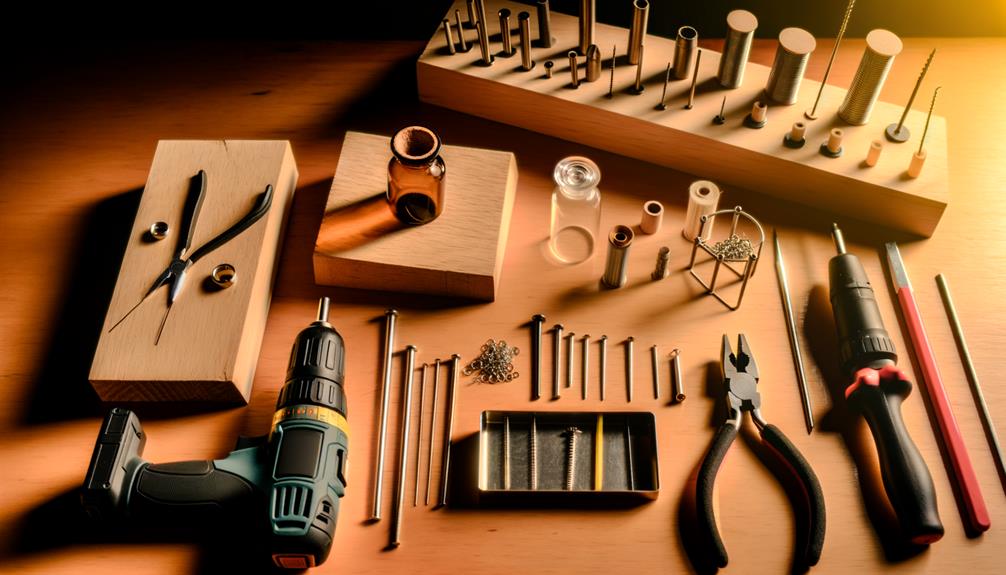
To construct a sparrow water feeder, you will need a precise list of materials to guarantee functionality and durability.
Foremost, procure a sturdy, non-toxic plastic or ceramic container, ideally with a shallow depth to accommodate the sparrows' drinking needs.
Next, obtain a stable base or stand to elevate the container, ensuring it is accessible to the birds but safe from predators.
Stainless steel screws and waterproof adhesive are essential for securing the components together.
Additionally, a fine mesh screen can be useful to cover the water surface, preventing debris while allowing sparrows to drink.
Ultimately, consider using a water purifier or dechlorinator to maintain the purity of the water, promoting the health and well-being of the sparrows.
Preparing the Container
Verifying the container is clean and free from any contaminants is the first critical step in preparing it for use as a sparrow water feeder. Begin by thoroughly washing the container with warm water and a mild detergent, confirming all residues are removed. Rinse thoroughly to eliminate any soap traces, which could be harmful to birds. Sterilizing the container by soaking it in a solution of one part vinegar to three parts water can also be beneficial. Allow the container to air dry completely before proceeding.
| Step | Materials Needed | Notes |
|---|---|---|
| Washing | Warm water, detergent | Remove all residues |
| Rinsing | Clean water | Confirm no soap remains |
| Sterilizing | Vinegar solution | Soak for 10-15 minutes |
This preparation ensures a safe and hygienic environment for the sparrows.
Assembling the Feeder

Begin the assembly by selecting an appropriate base, such as a shallow dish or saucer, that will effectively hold the water and provide easy access for the sparrows. Guarantee the base has a diameter of at least 6 inches to accommodate multiple birds simultaneously.
Next, attach a stable support, such as a wooden dowel or metal stand, to elevate the feeder slightly above ground level. This minimizes contamination from debris and predators. Secure the base to the support using waterproof adhesive or screws, guaranteeing a robust connection.
Additionally, consider incorporating a small, textured landing platform to facilitate sparrow perching. Meticulous assembly guarantees durability and functionality, significantly improving the feeder's utility and lifespan for avian hydration.
Adding Water and Placement
Carefully fill the assembled feeder with clean, fresh water, making sure the water level is sufficient for easy access but not too deep to prevent the risk of drowning for small birds like sparrows. Best water depth should be shallow, approximately 1-2 inches.
Once filled, place the feeder in a location that provides both safety and visibility.
- Choose a shaded spot to prevent water from heating up.
- Ensure the area is free from potential predators.
- Position the feeder near shrubs or trees for natural cover.
- Elevate the feeder to avoid ground-level contaminants.
- Keep the feeder within view from a window for observation.
These considerations will create a safe and attractive environment for sparrows to hydrate.
Maintenance and Upkeep
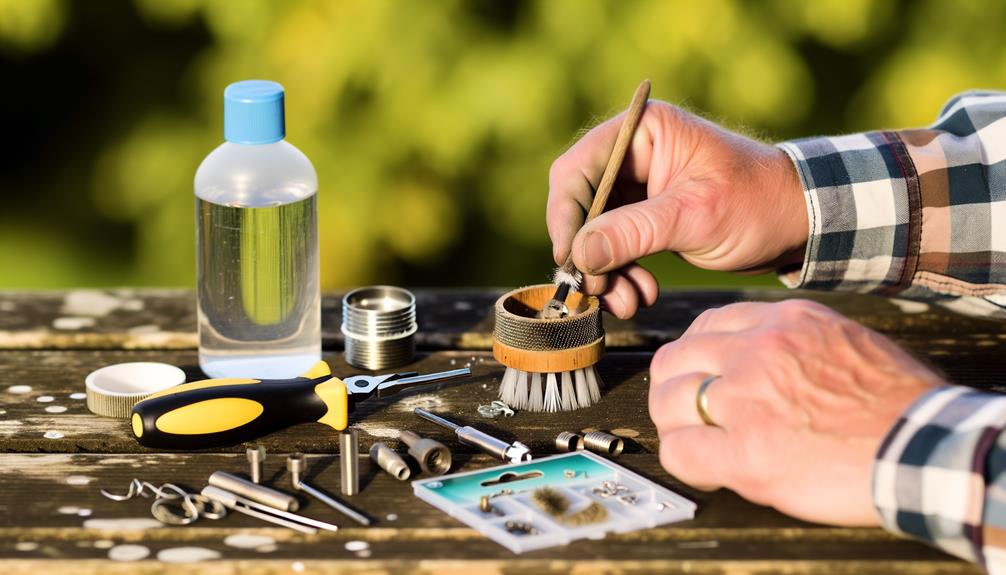
Regular maintenance of the sparrow water feeder is vital to secure the health and safety of the visiting birds. Begin by cleaning the feeder every two to three days to prevent algae growth and bacterial contamination. Utilize a solution of one part white vinegar to nine parts water for effective sanitation. Rinse thoroughly to secure no chemical residue remains.
Inspect the feeder routinely for structural integrity, checking for cracks or leaks that could compromise water quality. Refill with fresh, clean water daily to secure hydration and reduce the risk of disease transmission. During winter, consider using a heated birdbath to prevent freezing.
Conclusion
The meticulous construction of a sparrow water feeder, seemingly a simple task, reveals a multitude of opportunities for scientific investigation and societal contemplation.
While apparently meeting avian hydration needs, the project subtly questions the human-centric belief that human involvement is essential for ecological harmony.
Consequently, the sparrow water feeder not only serves as a practical item but also as a satirical reflection on humanity's self-assumed caretaking responsibility for nature, highlighting the complex relationship between human behavior and environmental care.

